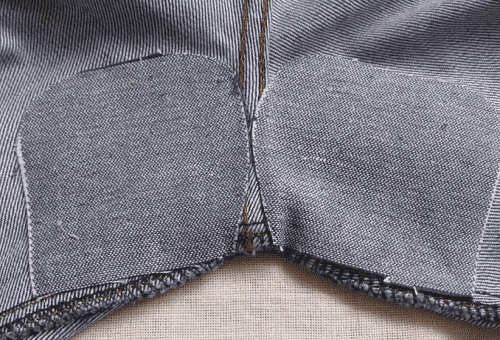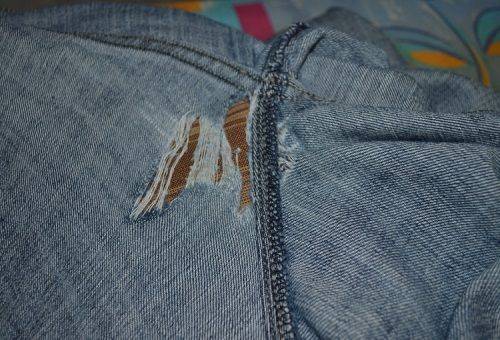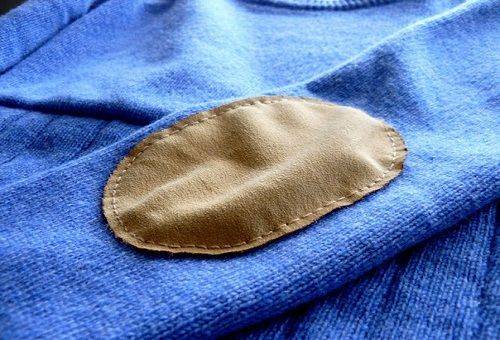How can you hand sew a patch on jeans or elbows?
If holes in the seams of products can be sewn without problems using a machine or processed by hand, then it is better to sew a neat patch onto the surface of the damaged fabric. It can be almost invisible or, conversely, noticeable. Today, you don’t even have to make the blanks yourself.

Types of patches, rules for their implementation
First of all, you need to understand what kind of patches there are, how they differ, what their advantages and disadvantages are. Functional elements with decorative properties are conventionally divided into three groups:
- Double-sided. Most often used to restore jeans, a torn sleeve at the elbow, and worn out knees. Consists of two parts of the same shape, but slightly different sizes. At the first stage, the smaller element is sewn to the problem area from the wrong side using any seam. On the second, a larger piece is applied from the face; it should completely cover the seam marks of the base patch. In this case, you can only use a blind seam made by hand; even a neat machine stitch will catch your eye.
- Set-in. A decorative option that can take on any shape. With its help, you can decorate not only problem areas such as a sleeve or knee, but also areas on the front of the product. Some creatives even use these elements to restore the area between the legs on pants.If you additionally apply several similar applications to the legs, it will look very original.
- Invoice. The simplest, but not the most reliable type. If everything is done correctly, the element will be almost invisible, but its service life is not encouraging. You just need to take a suitable flap and sew it to the surface of the fabric from the front side with a hidden seam.
Tip: If in the process of work you use flaps that differ in texture from the base, then it is better to pre-wet them and sew them on slightly damp. This will prevent the patch from deforming after washing the product.
After completing the work, the renewed area must be ironed and, if possible, steamed. It is recommended to wash jeans and trousers made of thick fabric immediately to ensure that the fabric lays as desired and there is no wrinkling in the area. When selecting flaps, you need to be based not only on the decorative and functional properties of the fabric, but also correctly compare the texture of the material with the base. Thick leather or velvet patches on light fabric will look out of place.
How to properly sew a patch on jeans between the legs?
When worn regularly, trousers quickly wear out in the area between the legs due to constant friction. Most often, jeans made from natural fabric suffer from this. For the restorative procedure, it is better for beginners not to experiment with different materials and simply take scraps of material that might have remained after shortening the legs. You can sew on the elements manually, but only if your needle skills are at a high level.
The event itself looks like this:
- First, jeans need to be washed, dried and ironed.We do the same with scraps of fabric from which we will cut out patches.
- Work with the area between the legs should be carried out in a mirror manner, even if only one side is damaged. To do this, we disassemble the connecting seams, iron the fabric, and remove excess threads. We mark with chalk the lines along which we will cut the material, leaving space for the seams.
- We cut out patches from the material, making sure to leave seam allowances. In the process of creating patterns, you need to use the mirror principle, otherwise one of the legs may become skewed.
- Next, we sew the patches onto the jeans using a connecting stitch. The threads must match those that were used to sew the product. If you don’t have the appropriate skills, it’s better to use machine stitching (zigzag or overlock).
After the manipulation, you need to make sure that the length of the trouser legs is not affected, and that there is no discomfort in the area between the legs.
Elbow patches - how to sew them on to make them look neat?
To restore the sleeve in the elbow area, you can use any of the listed types of patches. If you want to not only repair an item, but also give it a unique appearance, then you should try the option of using a kind of woolen heel. This move will look best on a thick or light sweater or sweatshirt.
The manipulation looks like this:
- We prepare everything you need. In addition to the sweater, we will need a thick rectangular sponge, a mold (profile or confectionery), colored wool, felting needles and tape.
- We put on a sweater, bend our elbows and glue pieces of tape at a distance of 2-3 cm from the fold. Thanks to the marks, everything will be done smoothly.
- After this, we pull the sleeve over the sponge, apply the form, focusing the bottom edge on the tape, and line the form with wool.
- Then we felt the wool using the traditional method, piercing it with a needle located at a right angle. We act until the fluffy wool turns into a dense layer.
- We remove the form and fix the work by steaming with an iron. This way you can decorate one sleeve, but the product will look more harmonious with two similar patches.
If everything was done correctly initially, the patches will not require special care. They will last for a long time, maintaining their original neat appearance.




Interesting way for sweater sleeves. I'll have to try it. Thank you